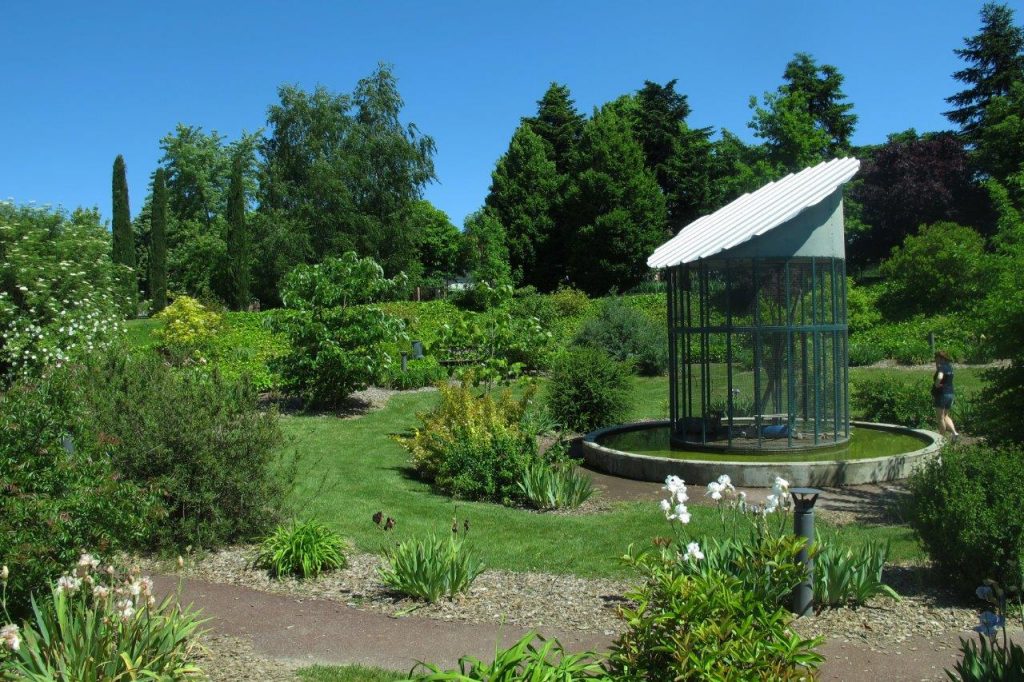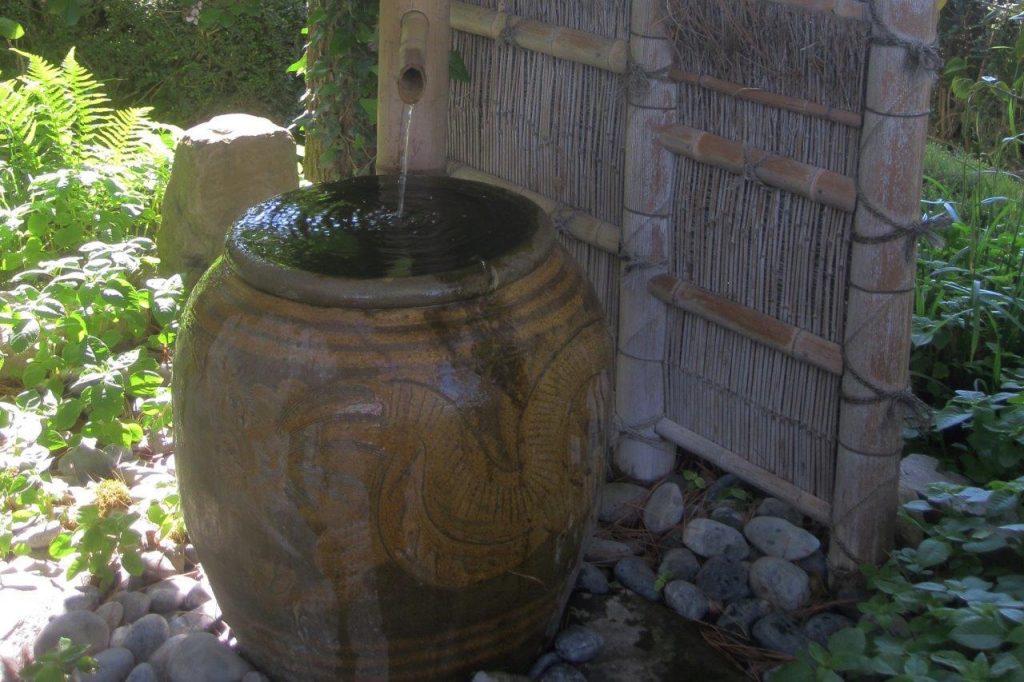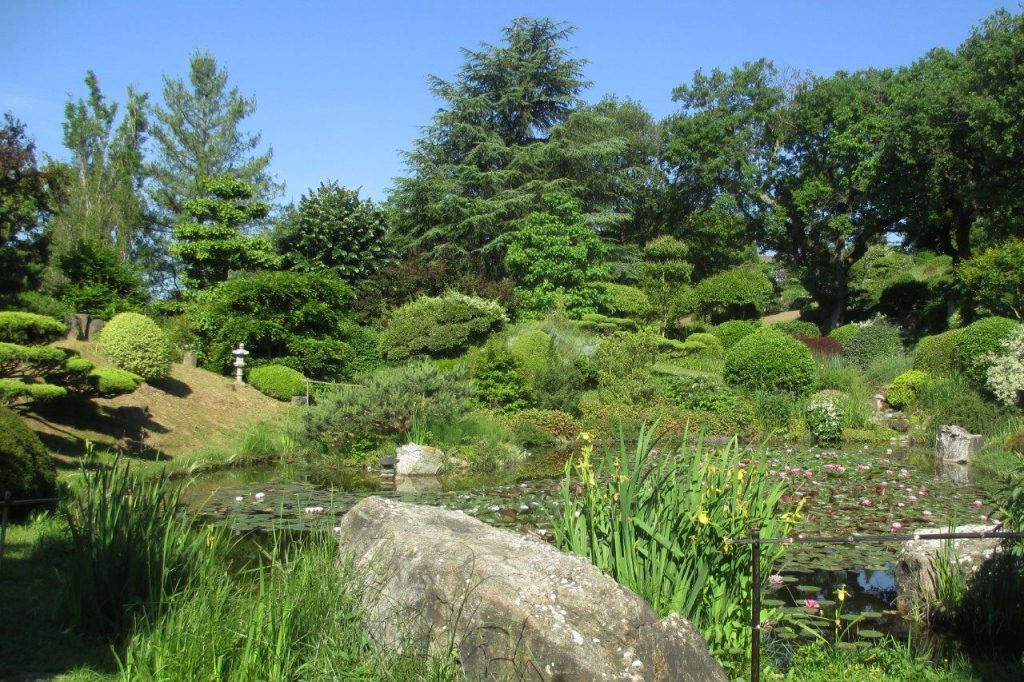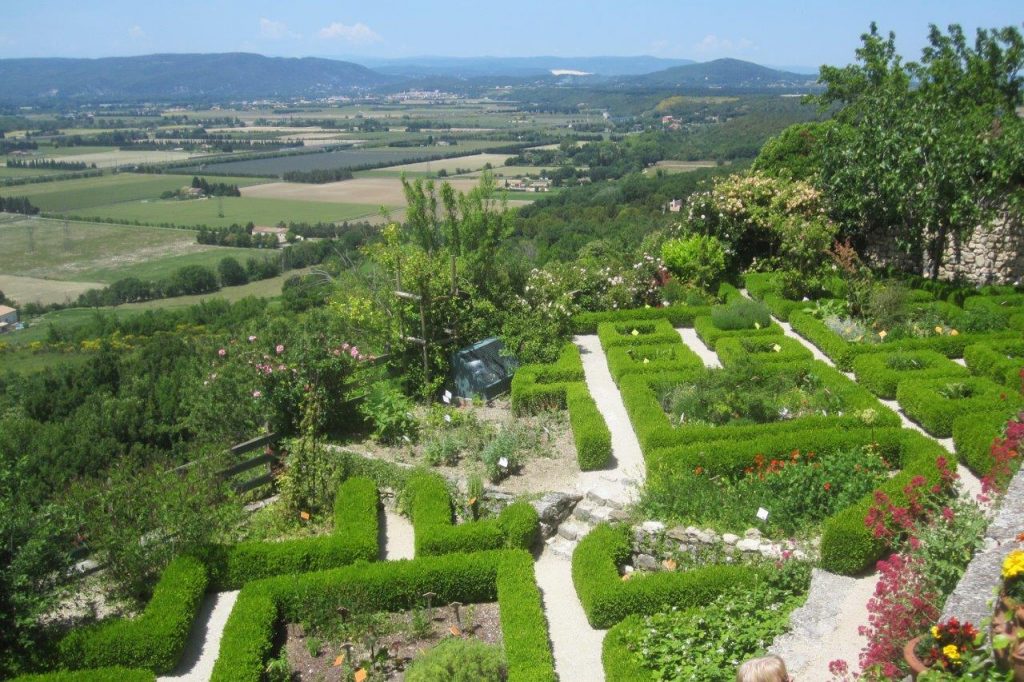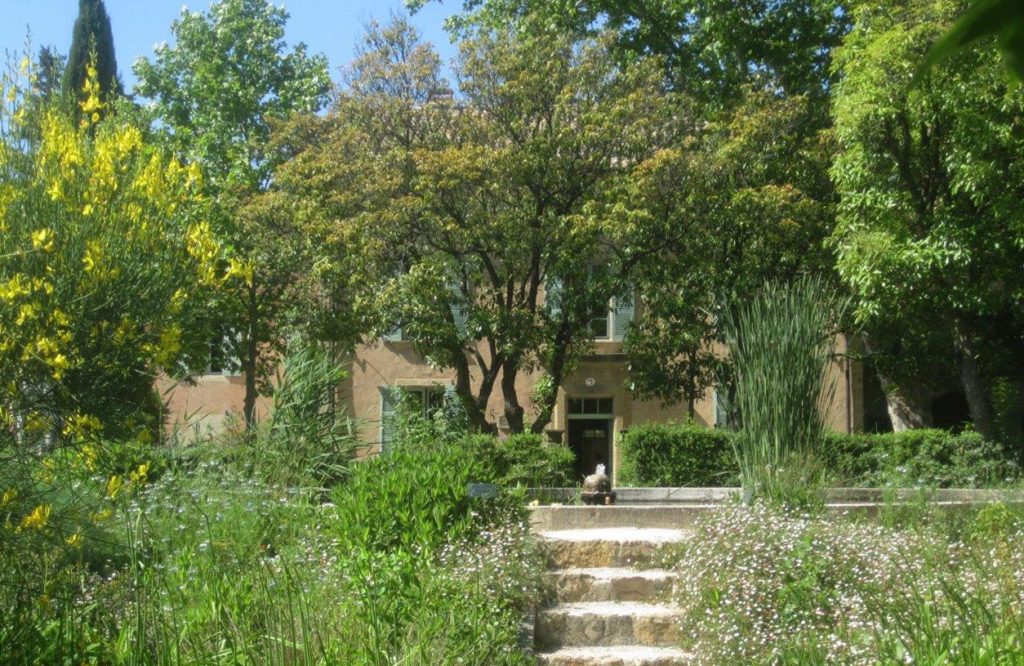June 2013 – Visits to Gardens in the Drôme
Click on the images to enlarge them / Cliquez sur les images pour les agrandir
Montélier – Village Botanique
A group of twenty of us met in front of the town hall in Montélier to be taken round the botanical treasures of the village by Hervé Canals, a volunteer who has given his time to develop the botanical interest of the village, to encourage garden tourism and to make it a pleasant place to live. Montélier is one of ten Villages Botaniques in the Drôme.
Hervé Canals has, since 2008, sourced plants, shrubs and trees of botanical interest from all over western Europe, and plenty of unlikely slopes and car parks have been made particularly attractive and interesting by his efforts, as well as more conventional plantings. In addition, he has populated a very pleasant Semaphore Park with all sorts of botanical treasures and created a Mexican desert garden by the church.
Hervé’s interest is in plants, trees and shrubs that are edible or decorative or both. He has planted a holly collection, an ivy collection, a strawberry collection and so many interesting plants that it would take pages and pages to list them. Particularly interesting (to me), was a small red horse chestnut, Aesculus x mutabilis var. harbisonii, a species of zanthoxylum (prickly ash, rutaceae family, from North America), that can be used for degreasing meat, and a deciduous holly, Ilex verticillata.
Apparently there are some 200 different plants, shrubs and trees of botanical interest in Montélier. They were all well labelled and there were little panels describing the various plants.
Text by Rosemary Halford
Photos by Rosemary Halford and Christine Daniels
Le Jardin des Sables
From Montélier we went on to the Jardin des Sables, an amazing garden commenced in 1997 in open country outside the village of Montvendre.
The site is a former agricultural field of just over a hectare on quite poor soil, though with a high water table, particularly at the lower end. It was planned and planted by the enthusiastic Mme Amoretti and her husband. The couple live in Valence about 14km away and the only building in the garden is a restored stone cabanon used for storing garden equipment. From nothing but an open field, which originally grew tobacco at the lower end and later wheat, they have created a beautiful park.
The layout is English in style with winding paths, interesting herbaceous borders, vistas and large open spaces with neatly mown grass.
There were also plenty of surprisingly mature trees.
Annie seemed particularly pleased with a Japanese cherry Prunus cerasusyedoensis, grafted onto a stock at ground level by a German specialist. She also drew our attention to Arbutus menziensii, from California, which sheds its rust-coloured bark each year to leave a pistachio-green under-layer.
The garden has a wide variety of plants, trees and shrubs and is full of colour and interesting textures and shapes. The shrubs and trees are well labelled and the standard of upkeep is phenomenally high.
The garden is open by appointment to anybody who wishes to come in to enjoy it, whether they are artists, gardeners or just people looking for a pleasant place to enjoy a picnic.
Text by Rosemary Halford
Photos by Rosemary Halford and Christine Daniels
The following morning we arrived early at the Jardin Zen in Beaumont-Monteux. Erik Borja began creating this remarkable garden in 1973, since when it has continued to develop and evolve. The land descends gradually down a slope to the banks of the river Isère.
One first arrives at the ‘jardin d’accueil’ where a terracotta pot and a bamboo water feature represent the traditional Japanese symbol of purification.
The Zen garden is probably the most recognisable part of the garden, with swirling gravel patterns representing the ocean and rocks representing islands.
The height of the trees and shrubs here is kept deliberately low as such gardens were traditionally seen from Japanese houses where windows are designed to be at ‘tatami height’. People sat on tatami mats and looked out through their windows, which effectively framed a living ‘painting’.
Other sections of the garden include areas designed for meditation, for drinking tea, a long allée to stroll down, a potager, a Mediterranean garden, a dragon garden and a beautiful lily pond.
Driftwood from the river and fallen trees became garden benches. The gardeners worked quietly, methodically, trimming the shrubs with hand shears.
The design of all of this is fluid, natural and with a total lack of symmetry. One member summed up everyone’s thoughts when they said the garden ‘lifts the spirits’. There is an excellent web-site: www.erikborja.fr.
Text by Duncan Munford
Photos by Christine Daniels
Le Jardin Botanique de la Garde Adhémar
Next we drove south to the village of La Garde Adhémar. Several members had visited the municipally run Jardin Botanique before and were delighted to see that the 3000 sq. metres of terraces were much improved.
The photograph is taken from the terrace above the garden which illustrates the symmetrical layout and immaculate box hedging which surrounds the planting.
The garden is divided into two distinct sections. The first is a garden of medicinal plants grouped by reference to their usage. The second section comprises aromatic plants including salvia, lavender and geranium. The view from the garden across the Rhône valley is quite spectacular.
Text by Duncan Munford
Photos by Christine Daniels
Le Jardin de l’Harmas Jean-Henri Fabre
For our final garden visit we continued south to Sérignan-du-Comtat where the naturalist and entomologist Jean-Henri Fabre lived from 1879 until 1915.
The house, known as the ‘Harmas’, is home to his collection of dried plants, fossils and insects. The garden contains historic trees, over 500 plant species, a potager and a wild flower meadow. After visiting the herbarium and museum we wandered through the very informally laid out garden, wondering whether much had changed from a century before.
Text by Duncan Munford
Photos by Christine Daniels
![]()

